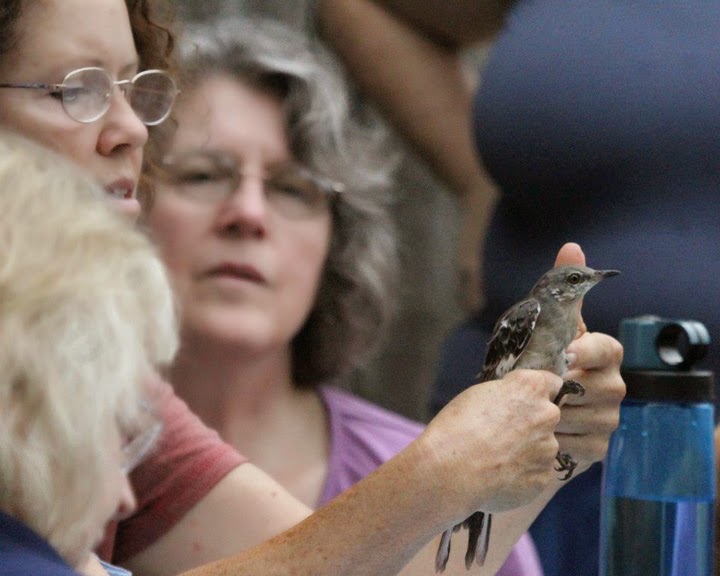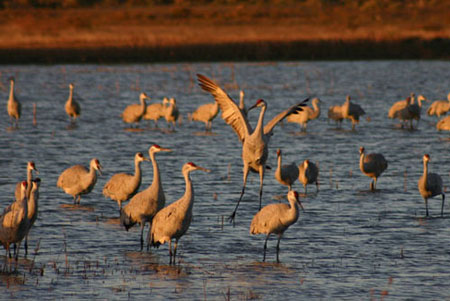This morning I helped trap hummingbirds for banding at Seven Islands State Birding Park in east Tennessee where local Ruby-throated Hummingbirds are preparing for migration and others are stopping to feed enroute to their wintering grounds in Central America and Southern Mexico. At the same time, three hurricanes are churning in the south Atlantic, and as I write, hurricane Irma, originally a category 5 hurricane that has devastated many islands in the Carribean, is barreling down on Florida.
Knowing that Ruby-throated hummingbird migration is in full swing, I have wondered how these hurricanes have affected their migration. I asked my friend and east Tennessee hummingbird expert, Mark Armstrong, to share what he knew about storm affects on migration. He answered with these comments:
"Unfortunately I don’t know much about their [hummingbird] survival in a storm. I’ve heard of birds making landfall on the fringes of other storms and arriving thin and exhausted. I’ve also read that migration from an evolutionary standpoint is actually across a broad front and a prolonged period so that some part of the population may be affected by adverse weather the majority will not be and survive. I also keep thinking about Dr. Buehler’s Golden-winged warblers. They were at their breeding territories, left when tornados were heading their way, some went to the Gulf coast and one went back to Cuba. Then they returned to breeding territories after the threat passed. That is amazing and we really don’t know what birds may be perceiving and if they are capable of moving away from a danger like a hurricane. Any small bird I can’t imagine would survive a direct hit from a storm with extremely high winds."
I, for one, am glad that the local hummingbirds frequenting my yard are hanging around and hope they will wait to leave until the many storm threats pass.
Meanwhile, we had a fun surprise during our banding session this morning at Seven Islands. You may think that the hummingbird pictured above is a mature male Ruby-throat. But surprise--this is a juvenile! Normally, we expect to see juvenile males in their first year with scattered red throat feathers like the one pictured in image three or we might see small clusters of three or four red feathers as their gorget begins forming.
This first year male had an almost fully formed gorget, which Mark described as a rare occurrence in his experience. Mark has banded over 4000 Ruby-throated hummingbirds since he began banding hummingbirds in 2005. The juvenile pictured had white tail feather tips and other attributes that are the identifying characteristics of juveniles.
Most of our hummingbirds will leave Tennessee by the end of September with some late individuals departing by the second week of October. Remember to leave at least one feeder out to feed our wintering hummingbirds that come from the west. These birds often arrive from October to December. If you should have a hummingbird at your feeder after November 1st, contact Mark Armstrong at Woodthrush@bellsouth.net or 865-748-2224.
Photo credit for banding images: Mark Armstrong
Why do we band hummingbirds?
Mark Armstrong and banding at Seven Islands
Wintering Hummingbirds in Tennessee
Seven Islands State Birding Park














